- 22 Ideas on how to make Medical Tourism Take Off in India.
- We need to think big and in an integrated cross-functional innovative way.
- Quality Medical Care at an affordable price could be India’s by-line.
India’s reputation as a producer of quality vaccines and pharma products got a boost during the pandemic. India should thus look to increase its share in the world wellness tourism market. The Medical Value Travel (MVT) in India is expected to grow to $ 13 billion by 2026. The
word Medical Tourism is often used but what is it?
It
means people from abroad coming to India for treatment of the body and the mind.
It includes allopathy, nature cure like Ayurveda/Yoga and spiritual Indic
philosophy with the last three being an integral part of India for centuries.
India offers excellent options for rejuvenation and alternate therapy.
What is India’s advantage? Quality medical care, lower cost, doctors/nurses are fluent in English and a rich tradition of wellness.
In
2019 foreign tourist arrivals (FTAs) in India on account of medical visa was 697,000
(2017 4,95,056). According to statistics, India receives most of its medical
tourists from Afghanistan, Oman, Bangladesh, Maldives, Nigeria, Kenya and Iraq.
Let
us look at country-wise Foreign Tourist Arrivals in 2020 with purpose as
Medical (186,644). Due to the pandemic this might not be representative
but gives an idea.
Foreign Tourist Arrivals Medical 2020*
|
Country
|
Arrival in Numbers
|
Perc
entage
|
|
North
America
|
516,920
|
.1
|
|
Central/South
America
|
26,968
|
.1
|
|
Western
Europe
|
6,24,615
|
.1
|
|
Eastern
Europe
|
1,68,145
|
3.4
|
|
Africa
|
90,296
|
19.5
|
|
West
Asia
|
97,651
|
29.9
|
|
India’s Neighbourhood
|
7,50,061
|
17.5
|
|
East
Asia
|
1,30,383
|
.1
|
|
Australasia
|
1,05,047
|
.4
|
|
Not
classified
|
3,018
|
15.2
|
|
Grand Total
|
27,44,746
|
6.8
|
*Source Ministry
of Tourism Statistics Pg. 59
The 2020 table shows India’s neighbourhood, West Asia and Africa are significant contributors to MVT. To the countries above add Sudan,
Tanzania and Yemen.
The
above numbers indicate there is scope for improvement. We cannot take solace in
the fact that the number of Medical Visas issued
by the Dubai
Consulate increased from 523 in 2016 to 545 in 2017.
India needs to increase the absolute numbers with more
patients from Europe, Africa and Central Asia.
After all just look at the cost differential.
Cost Comparison (All figures in $)
|
Medical Procedure
|
India
|
High
|
Low
|
|
Heart Bypass
|
7900
|
26,000
|
7900
|
|
Spinal Fusion
|
10,300
|
16,900
|
6000
|
|
Knee Replacement
|
6600
|
17,500
|
6600
|
Source: NITI
Aayog; Note: High and Low prices are across major destinations for MVT
A former diplomat who worked in Netherlands in the early 2000’s told this author that getting appointments for non-life threatening diseases took months unlike India where there is virtually zero waiting time for any procedure. Also, the situation was compounded because there were no private medical practioners in Netherlands.
According
to a former diplomat who worked in Africa India must look to help those at the
bottom of the pyramid.
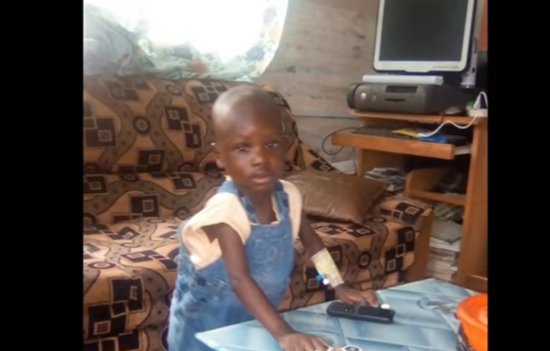 Patient Nigeria. Pic by Narayana Health.
Patient Nigeria. Pic by Narayana Health.
An Indian origin doctor who works in Nairobi (note Kenya is amongst the more prosperous countries in Africa) was good to share insights of Kenya’s healthcare sector with the author.
He
said that every Kenyan has to contribute to the NHIF (National Health Insurance
Fund). To encourage use of local facilities the government of Kenya has put
restrictions on Kenyans who wish to travel overseas for treatment. To travel
they have to produce a certificate from a local doctor that Kenya does not have
facilities to treat that illness. The rich, however, prefer to travel overseas
for treatment. The cost of treatment in Kenya is 4-5 times that of India. Trust
in Indian doctors is high. Service levels in Kenya are lower than India. Aga
Khan and Nairobi Hospital (British era) are amongst the best private hospitals
there. Other private hospitals are those set by a community of Indian doctors,
who have worked there for say 25 plus years, and local businessmen. Kenya
attracts patients from Rwanda, Ethiopia, Uganda and Tanzania. Kenya has 4-5
medical colleges between private and public sectors. Main sicknesses are HIV,
Tuberculosis, Malaria, Heart/Kidney transplant.
MVT
must also be looked at through the prism of foreign policy and benefits like earning
forex, creating jobs and earning tax revenue. Simultaneously, support of State
governments will be there if they are convinced about benefits and multiplier
effect of MVT.
Here
are some ideas on what India can do to promote MVT.
Medical
Tourism requires a Cross Ministry and Public-private partnership effort. The
ministry of health, external affairs, Ayush, tourism and civil aviation need to
work together with private hospitals and state governments. Tourism should be
understood to include medical and not be restricted to heritage. A
collaborative effort and regular interaction between ministries and hospitals would
build an element of trust essential if potential has to be realized. Read on.
1. Patients should be given visas only when treated only at National Accreditation Board for Hospitals & Healthcare Providers
(NABH). This will ensure better treatment and patient shall not get swayed by
agents of unaccredited hospitals.
MVT
should include Indian forms like of wellness like Ayurveda, Yoga, Siddha,
Spiritual Philosophy etc.
2. Visas take time, sometimes over three months. Can a visa system be designed such that a visa comes in a maximum of seven working days?
For
e.g. all documents (including Indian hospital invite letter, local police
report) be uploaded on a Visa portal which is scrutinised and followed by a
personal interview on day 8. To speed up the process visa can be city
specific.
3. Hospitals in designated cities like Mumbai, NCR, Kolkata, Bengaluru and Chennai that have international connectivity, can cater to medical tourists. Focus on a few cities and provide internationally comparable service.
This
shall enable building and sharing of standardised infrastructure like hotels
and guest-houses besides making management easier.
Wellness
hubs though, could be outside of the metros.
4. Help-desk at airports must cater to all customer needs be it medical, transport, sightseeing, visa, ambulance, emergencies, baggage loss and handling of cash.
5. A common problem is when patients bring huge amount of foreign currency that gets lost or is stolen. Imagine being stranded in an alien country without money.
The
help-desk should accept the foreign currency, open a bank account there and
then, credit the rupee equivalent and give patient a rupee cheque book. If a
documents check-list is given to the patient before leaving for India opening
account would be easier.
When
the patient is leaving the country, the unspent rupees can be converted into
dollars and given to the patient.
The
Bank at airport would need to give a certificate to the patient and hospital
for the dollars and rupee equivalent spent in India. The hospital would need
the certificate to claim appropriate tax-breaks. If required the law/rules
needs to be amended to enable hospitals to get tax break in such cases.
For
this system to work the designated bank must have a person at the help-desk.
If
entry of patients is limited to a few cities this is very doable.
6. Since every patient has to visit the FRRO (Foreign Regional Registration Office) once, it would help if an MVT person is attached to the concerned office.
7. Central Grievance Committee, under the Ministry of Health, is where all patients can make complaints. The committee could have government and hospital representatives.
These
steps would make India a patient friendly destination and enhance overall
customer satisfaction.
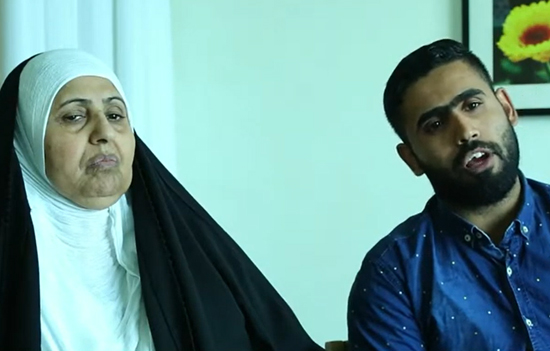 Patient Oman. Pic by Max Hospitals.
Patient Oman. Pic by Max Hospitals.
8. MVT needs a one stop portal that provides all information on available hospitals, treatment offered with indicative prices, testimonials, Ayurveda and Yoga rejuvenation and learning centres and colleges to learn Indic philosophy. Each centre of learning should be mapped on site to an international airport.
All
this would make things easy and increase transparency. The Service Export
Promotion Council, set up by Ministry of Commerce and Industry, is a useful
website that can be improved.
Patients
should be encouraged to give feedback on the portal and rate their hospital
experience. A dedicated multi-lingual helpline would help.
Standardization
of rates and treatment across hospitals is a good concept but actual cost will
vary depending on condition of the patient and what happens on the operation
table. Instead, strengthen the feedback and complaint mechanism as a remedy for
erring hospitals.
9. Ambassadors of each country must ascertain the medical treatment system in their host country and identify gaps just like the former diplomat, based on experience, did so above. MEA could share this information with ministry of health and tourism who should work with partners to tap that market.
10. The ministry of health must on receipt of inputs from NABH, prepare a Paper on the services India offers and its competitiveness. This paper must be shared with the ministry of external affairs and in turn with the Consulates of countries who send patients.
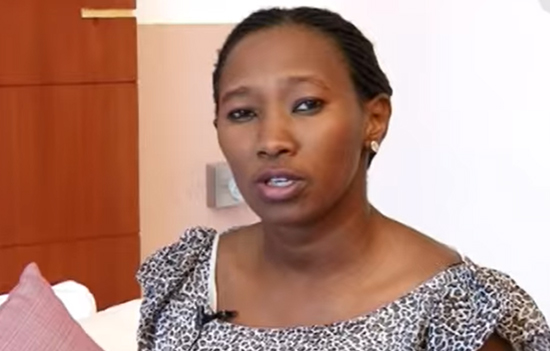 Patient Kenya. Pic by Apollo Hospitals.
Patient Kenya. Pic by Apollo Hospitals.
11. The MEA must have an annual budget for subsidising the cost of medical treatment for residents e.g. countries of Africa and Central Asia. (Dynamic list)
The
subsidy could take two forms for poor patients, one those who come to India and
two for those who get treated in Indian hospitals in those countries. Option
one would be easier to administer.
This
move shall increase the number of medical tourists and generate goodwill for
India. Concept is similar to the PLI (Production Linked Incentive) scheme that
seeks to enhance investment and employment in the manufacturing sector.
The
subsidy idea is endorsed by the former diplomat and Kenya based Indian doctor.
The exact framework can be worked out.
Thus, MVT becomes an integral part of India’s foreign policy.
12. According to a former diplomat who worked in Africa the subsidy might help the more well-to-do people and not those at the bottom of the pyramid.
So
to help the poor he suggested that Indian hospital chains could one, enhance
local skills through training and two, set up hospitals in African countries for
e.g. Apollo
Hospitals partners with Balmers Healthcare to set up a Tertiary Hospital in
Kenya Apollo has hospitals in Bahrain, Nigeria, Bangladesh and
Dubai. Narayana Health has a hospital in Caymans Islands and supporting a project
in St Lucia. Once Indian hospitals build infrastructure in these countries,
only the more complicated cases could be sent to India.
Some
Indian doctors in Kenya who have been there for 25 plus years and set up
hospitals would welcome move to upgrade skills.
13. If India wishes to make these countries Atma Nirbhar
it could allow Indian medical colleges to open branches in select countries
thereby increasing the number of doctors.
So
it is not only about MVT but contributing to global well-being.
Also read Africans
seeking healthcare in India draw hospitals to Africa
14. Key is to reach out to poorer African countries and the poor across nations.
It
is not possible for Indian hospital chains to set up hospitals in every African
country. Suggest they follow the hub and spoke model. For e.g. Nairobi could be
a hub for countries of East Africa and so on.
So also local hospitals set up by Indian hospital chains should be authorised to undertake post-operative care and prescribe medicine to patients who were treated at the chain’s Indian hospital.
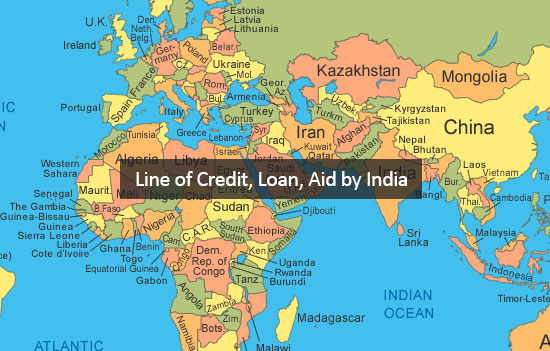 India must review approach to foreign aid.
India must review approach to foreign aid.
15. Indian hospital chains who set up hospitals in say Africa and Central Asia must be provided Lines of Credit by EXIM Bank i.e. loans at a concessional rate of interest.
16. Insurance companies esp. those which are joint-ventures with foreign companies like Bajaj-Allianz could purse the selling of Indian health insurance to foreigners who wish to be treated in India.
This
would enhance revenue of both partners and ensure prompt payment by insurance
companies in India for treatment at Indian hospitals.
17. Indian MNCs like Tatas could for their employees, of companies like Jaguar and Tata Steel Europe, provide for medical insurance in India. A tie up with group-company Air India could provide discounted air-fares.
18. India could help United Kingdom (UK) by offering medical services for its citizens in India. Since the National Health Service is funded by the UK government, a reduction in cost impacts its fiscal deficit.
Whilst
the exact nature of service can be decided, logistics would not be easy. A
technology based platform that is integrated with airlines and service
providers might make this idea fly.
Perhaps,
the matter can be included in FTA (free trade agreement) discussions underway
with UK.
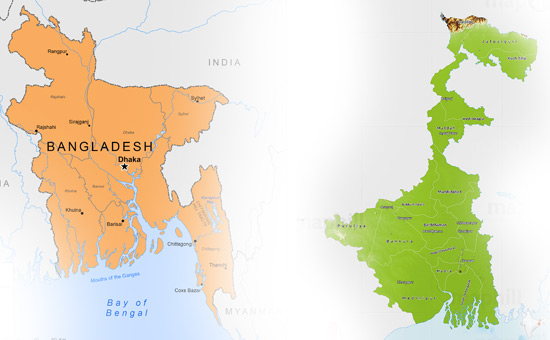 Medical Tourism should not become a tool for Illegal infiltration.
Medical Tourism should not become a tool for Illegal infiltration.
19. Patients come from African and Middle Eastern countries and India’s neighbourhood. They are invariably accompanied by a caretaker who doubles up as an interpreter and in return expects a commission from the hospital.
Whilst
payment of commission is a reality, every effort must be made for direct
contact between Consulate, Patient and Hospital. For every patient referred by
the Embassy the hospital must pay a management fee, at a pre-determined
percentage, to the Government of India for services rendered.
20. Patients who need follow up care mostly return to the hospital and buy medicines locally since Indian hospital prescriptions are not accepted in the host country.
The
ministry of External Affairs must, based on inputs from the ministry of health,
speak to their counterparts whereby prescriptions given by NABH where the patient
was treated are accepted in the host country. This preludes the need for the
patient to visit India only to buy medicines.
21. Hospitals must hire local interpreters who know the language of patient’s country and give an option of hiring a caretaker.
22. The Home Ministry should be involved to the extent that MVT does not become a tool for illegal immigration.
The 'Heal in India' initiative aims to position the country as a global hub for medical and wellness tourism. We need to think big and in an
integrated cross-functional innovative way.
Medical tourists should be treated as Guests with India’s approach of Atithi Devo Bhava.
Quality Medical Care at an affordable price could be India’s by-line.
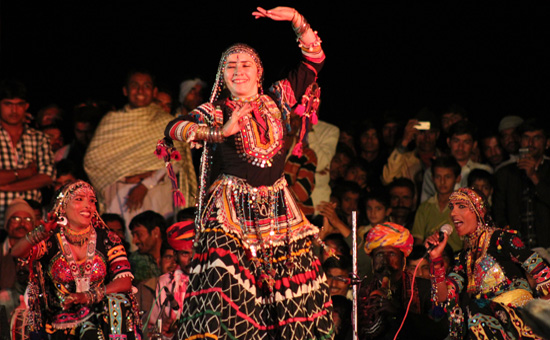 Hungarian performs Kalbelia Dance, Jaisalmer Desert Festival 2013.
Hungarian performs Kalbelia Dance, Jaisalmer Desert Festival 2013.
First
published Swarajyamag and Here
Also read
1.
India
must review its approach to Foreign Aid
2.
List
of Institutions in India where you can learn Yoga
3.
Poomully Mana – Home to Pristine Ayurveda
4.
Learnings
from Ayurvedic course at Sivananda Yoga Dhanwantri Ashram, Kerala
5.
Ideas
for Tourism Policy India